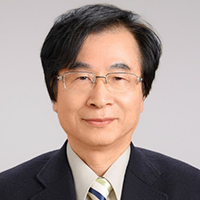
The Role and Future Prospects of Japan Concrete Institute
The Japan Concrete Institute, which reached its 50th anniversary last year, has renewed its determination for the next 50 years looking back the history of its activities.
It has passed over 150 years since modern cement was imported in Japan and more than 140 years after the first government-owned cement factory was built. Usage of concrete for the construction of harbor facilities including revetments, breakwaters and warehouses was the initial step in the development of concrete technology. After that, further technological developments have allowed concrete to be used in various infrastructural facilities and buildings, and to be a basic construction material that significantly contributes to the growth of Japan.
While both civil engineering and architecture fields had been having their own concrete-related technologies developed independently, the consensus of the people engaged in the related fields lead to the establishment of this institute in 1965, with the aims to promote the development of more advanced concrete technologies and to educate on-site concrete engineers. The expansion in the activities made the institute change its name from the original Japan National Council on Concrete to the Japan Concrete Institute in 1975. Furthermore, the body was shifted to public interest incorporated association in 2011, to adapt the name to the activities.
The institute continues its activities to play roles in the development of the science and technology by forming committees such as the Research Committee, Committee for Concrete Technology, Standards Committee and Publicity Committee. Furthermore, when a huge disaster like the Great Hanshin Earthquake or the East Japan Great Earthquake occurs, the institute forms a special committee to quickly investigate damage of concrete structures, to make proper suggestions to society, and to contribute to the development of science and technology by conducting researches on concrete structures capable of resisting huge disasters.
The activities to promote researches and technological developments and to convey technical information include the publication of a journal, "Concrete Journal", a collection of Japanese papers, "Concrete Research and Technology" and a collection of English papers, "Journal of Advanced Concrete Technology". Considering the progress in the computerization, the institute also uses online journals as a means of widely disseminating knowledge and technologies along with hardcopy. In addition, the institute holds the JCI Annual Convention every year which involves the presentation of latest research findings, the Ready-Mixed Concrete Seminar to introduce various technologies and researches to make good concrete, and the Concrete Techno Plaza to display the up-to-date technologies and products generated by companies.
To educate engineers dealing with concrete, the institute has established a certification system that certifies them as an Authorized Concrete Engineer, Authorized Chief Concrete Engineer or Authorized Concrete Diagnosis & Maintenance Engineer, and sent many good engineers into the world. The system has produced 44,238 Authorized Concrete Engineers, 10,595 Authorized Chief Concrete Engineers, and 11,667 Authorized Concrete Diagnosis & Maintenance Engineers until today, substantially contributing to the production of good concrete and to the construction of concrete structures with high seismic resistance and durability.
Although the Japanese society is mature, a natural disaster can occur at any time on an unexpectedly large scale. The Japan Concrete Institute will continue to be fully committed to addressing various issues, aiming to contribute to the formation of a better society.
Looking forward to your continued support and cooperation.
Kyuichi MARUYAMA
27th President
Japan Concrete Institute







